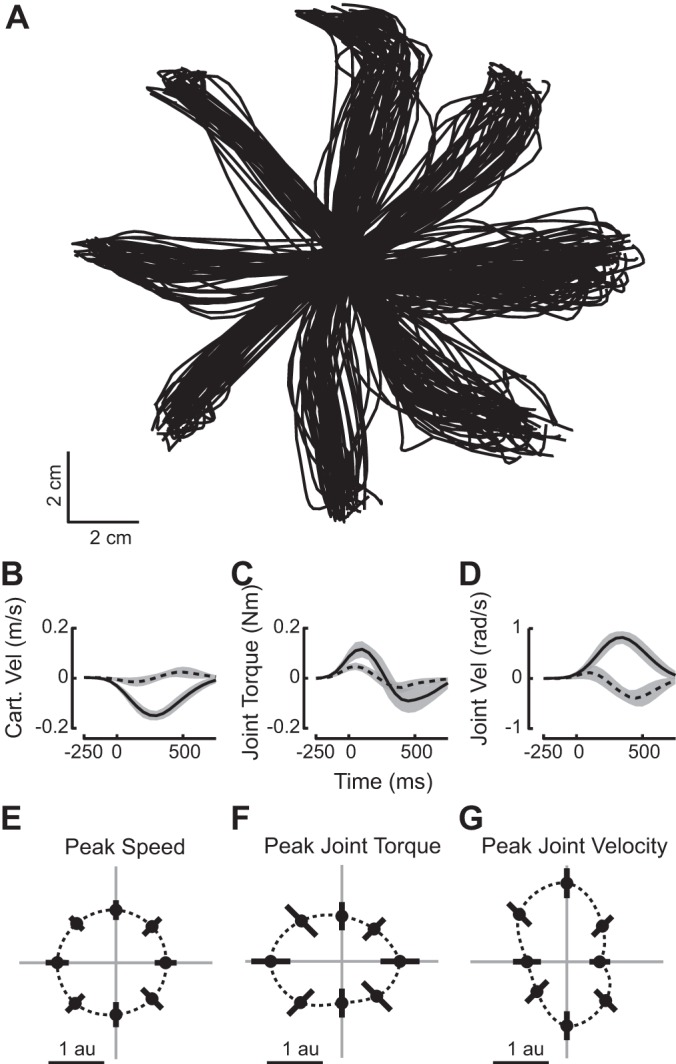Fig. 2.

Kinematic features of reaching movement. A: hand trajectories from center to peripheral targets for all reaches during one recording session. B–D: averaged time courses for three features of reaching movements in the leftward direction (180°) during the same recording session. B: Cartesian velocity in the X (solid line) and Y (dotted line) dimensions. C: shoulder (solid) and elbow (dotted) torque. D: shoulder and elbow angular velocity. Traces are averaged over all reaches to the left (180°), and shading represents 1 SD on either side of the mean. Time 0 corresponds to the start of movement (SOM). E–G: polar plots of peak speed, peak joint torque, and peak joint velocity during reaches to 8 targets. The mean quantity and the corresponding SD derived from data normalized and pooled over all recording sessions are shown as dots and bars, respectively. Peak hand speed, joint angular velocity, and joint torque were compared across the 8 directions in the task. The total joint velocity refers to the sum of rectified shoulder and elbow angular velocities. Similarly, the total joint torque refers to the sum of rectified torques in the shoulder and elbow. For each dataset, the peak values of each feature were found for every reach and normalized by the mean across all trials in all directions. The normalized peak values for each direction were pooled across all datasets (for monkeys using the left hand, directional data were reflected about the y-axis to allow for pooling with right-handed data).
